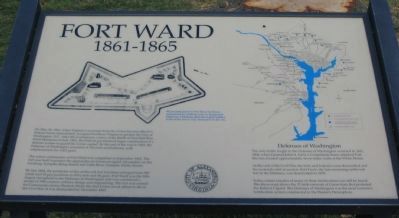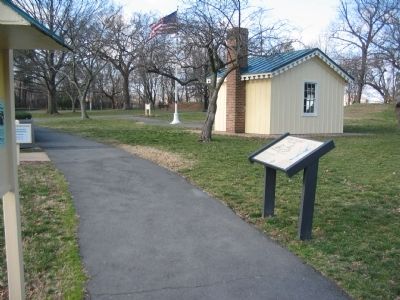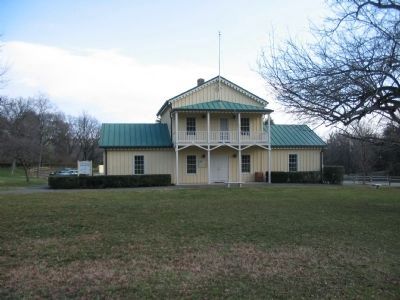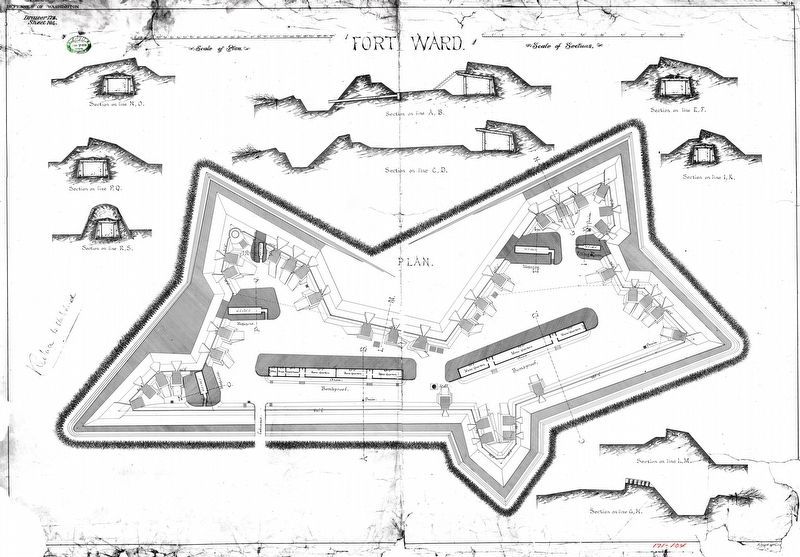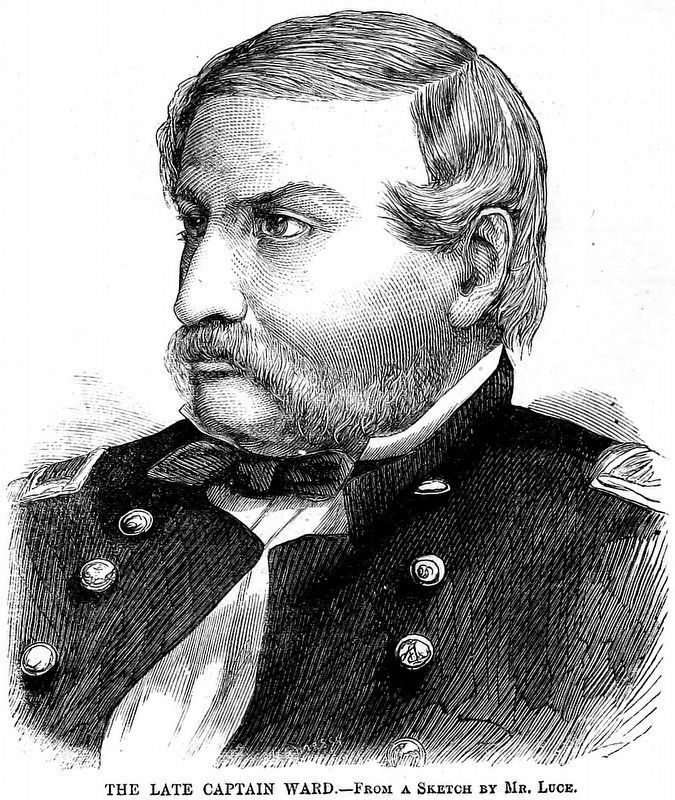Seminary Hill in Alexandria, Virginia — The American South (Mid-Atlantic)
Fort Ward
1861-1865
The initial construction of Fort Ward was completed in September 1861. The fort was built to protect the approaches to Union-occupied Alexandria via the Leesburg Turnpike (King Street) and Little River Turnpike (Duke Street).
By late 1864, the perimeter of the earthwork fort had been enlarged from 540 yards and 24 gun positions to 818 yards and 36 guns. Fort Ward was the fifth largest stronghold in the Defenses of Washington and was considered a model of 19th-century military design and engineering. The fort was named for Commander James Harmon Ward, the first Union naval officer to die in the Civil War. It ws dismantled by December 1865.
Defenses of Washington
The only battle fought in the Defenses of Washington occurred in July 1864, when General Jubal A. Early's Confederate forces attacked Fort Stevens, located approximately seven miles north of the White House.
At the end of the Civil War, the forts and batteries were dismantled and the materials sold at auction. Fort Foote, the last remaining earthwork fort in the Defenses, was deactivated in 1878.
Today, extant remains of many of these fortifications can still be found. The above map shows the 37-mile network of Union forts that protected the Federal Capital. The Defenses of Washington was the most extensive fortification system constructed in the Western Hemisphere.
Erected by City of Alexandria.
Topics and series. This historical marker is listed in these topic lists: Forts and Castles • War, US Civil. In addition, it is included in the Defenses of Washington series list. A significant historical month for this entry is May 1842.
Location. 38° 49.767′ N, 77° 6.114′ W. Marker is in Alexandria, Virginia. It is in Seminary Hill. Marker can be reached from West Braddock Road, on the right when traveling west. Located between the parking lot and the museum at Fort Ward Historic Site. Touch for map. Marker is at or near this postal address: 4301 West Braddock Road, Alexandria VA 22304, United States of America. Touch for directions.
Other nearby markers. At least 8 other markers are within walking distance of this marker. Entrance Gate to Fort Ward/Officers' Hut (within shouting distance of this marker); African Americans and the Civil War (within shouting distance of this marker); "The Fort" and "Seminary" Community (within shouting distance of this marker); The Oakland Baptist Church (within shouting distance of this marker); a different marker also named Fort Ward (within shouting distance of this marker); Bombproof (within shouting distance of this marker); a different marker also named Fort Ward (about 300 feet away, measured in a direct line); Oakland Baptist Church Cemetery (about 300 feet away). Touch for a list and map of all markers in Alexandria.
More about this marker. On the left below the title is an engineering diagram of the main part of Fort Ward. On the right above the Defenses of Washington section is a map showing the fortification chain around Washington, D.C. A small caption in the center states, Please help preserve Fort Ward for future generations by walking only on designated pathways. Climbing upon the fragile earthen walls of the fort is very destructive to the site.
Also see . . . Fort Ward Historic Site. (Submitted on May 8, 2008, by Craig Swain of Leesburg, Virginia.)
Credits. This page was last revised on March 14, 2024. It was originally submitted on May 8, 2008, by Craig Swain of Leesburg, Virginia. This page has been viewed 2,464 times since then and 35 times this year. Photos: 1, 2, 3. submitted on May 8, 2008, by Craig Swain of Leesburg, Virginia. 4, 5. submitted on March 14, 2024, by Allen C. Browne of Silver Spring, Maryland.
